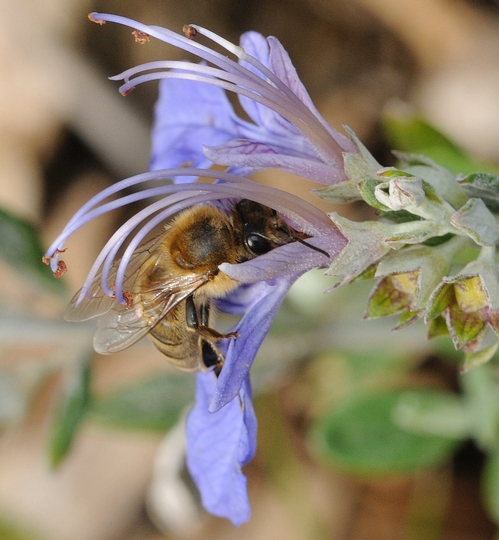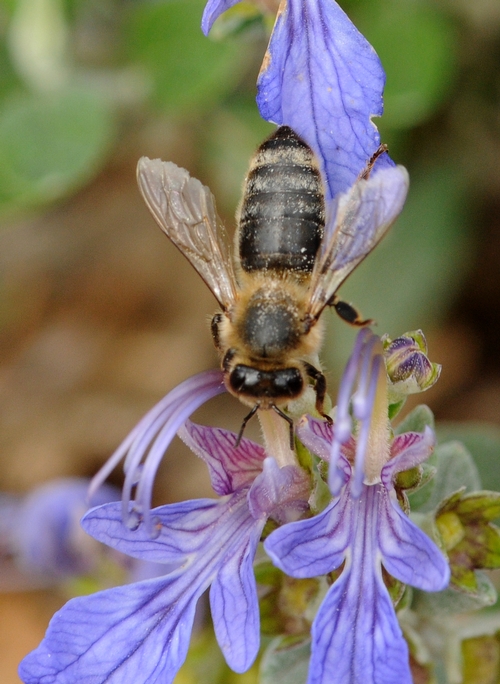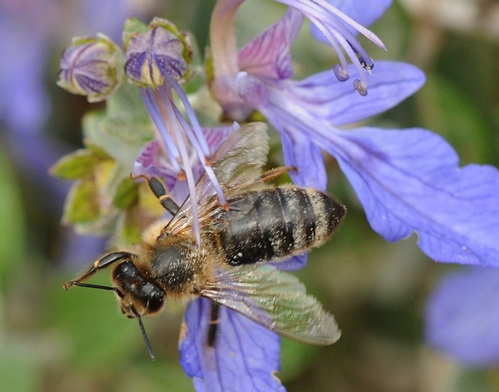It didn't take long.
Last year at this time the field next to the Harry H. Laidlaw Jr. Honey Bee Research Facility on Bee Biology Road at the University of California, Davis stood bleak and barren.
Nothing there but scattered patches of grass and a few pocket gophers and ground squirrels.
Last fall, after an international design competition, the site morphed into the truly beautiful Häagen-Dazs Honey Bee Haven, a half-acre bee friendly garden designed as a year-around food source for the bees in the Laidlaw apiary and as educational opportunities for visitors. Visitors will learn all about honey bees and what to plant in their own gardens to attract pollinators. (Folks can also download the 21-page design, which includes the list of plants.)
Next to crop up: The quarter-acre Campus Buzzway, planted with California poppies, lupines and coreopsis (tickseed). Blue and gold? Those are the university colors. The Buzzway sprawls on land once occupied by the Baxter House.
Fast forward to today, Feb. 26. The Häagen-Dazs Honey Bee Haven and its neighbor, the Campus Buzzway, are beginning to take off, just like the beginning pilots that practice their take-offs and landings at the nearby University Airport.
Among the first to bloom: the salvias, lupines, and almond trees. Next: the Teucrium fruticans, cultivar "Azureum."
The Teucrium fruticans, or bush germanders, are in the mint family, Lamiaceae. They're evergreen perennial shrubs native to the Mediterranean and produce strikingly brilliant blue flowers.
And you know how much bees like the color, blue.
It's pure bee bliss.Attached Images:

Honey Bee

Peek-a-Bee

Seeking Nectar

Looking Around